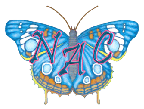Volume 7 Issue 6

RADFORD POTTERY

RADFORD POTTERY
Edward Thomas Brown Radford was born in 1882 to an established family of potters. He was the son of Edward Thomas Radford, who trained at Wedgwood and would later become one of the leading potters
at Pilkington Tile and Pottery in Manchester, England. His father worked at Pilkington from 1903 until his retirement in 1936. He marked his pieces with an incised "ETR" mark. His contemporaries described
him as having the ability to throw pots of any size. Edward joined his father at Pilkingtons in 1905. In 1907 he married Jenny Harris. However, the Great War interrupted both his life and career. He also
appears to have had a brother Albert who is associated with production of pottery in Tiffin, Ohio.
After the war, Edward Radford moved to Stoke-on-Trent and returned to pottery. According to an advertisement in the Pottery Gazette in 1920, he spent time representing various manufacturers and merchants.
The Radford Handcraft Pottery was established in 1930 as part of H. J. Wood Ltd. in Burslem. Their products consisted of vases, jugs, and bowls in floral, cottage or tavern scenes, and art deco designs, as well
as stylized landscapes, such as the "Trees" and incised "scraffiato" designs. It was hand thrown with a matte glaze. These early pieces are the most sought after by collectors. In the thirties the inventory was
expanded to animal figurines. Although there were approximately 15 paintresses employed at any one time, the "Trees" patterns were painted by one man, James Harrison. Many of the designs were conceived by
Mabel Hadgkiss NRD. She was trained at the Burslem School of Art by Gordon Forsyth. Some patterns were also designed by the paintresses themselves. Mr Radford liked to refer to them as his "artists". The
pottery continued to produce during World War II.
In 1948 he retired. He and his wife moved to Derbyshire as caretakers of a home owned by the Church of Christ. In 1954 they moved back to Manchester. During that time, he gave pottery classes at Cheetham
Hill College for a number of years. Edward Radford died in 1969.
After the 1948 retirement of Edward Radford, H. J. Woods continued to make pottery using Radford's trademark for several years. The difference being that the pieces were moulded instead of being hand-thrown.
Some of the patterns were similar or identical to the earlier pieces. However, over time new designs were added. These new pieces are the typical designs of the later Radford pieces. They usually were handpainted
flowers with a subtle wash over the white clay. They are usually marked with a two-letter pattern number, identifying the design.
Samuel Radford of Fenton is not connected with pottery of Edward Radford. Samuel Radford mainly produced china dinnerware.
Also, some names such as "Elizabeth", "Eric" or "Eleanor" Radford are sometimes given by dealers when describing E. Radford. These are not valid names.
MARKS
Radford Pottery earlier pieces are usually marked "E. Radford Made in Great Britain", "E. Radford Burslem" or just "E. Radford". These pieces, are almost always handthrown, having a sponged background
in shades of blue, brown, green or beige, and is usually decorated with floral designs or landscape scenes under a matte glaze. These earlier pieces are the most sought after. Obviously, the more desirable patterns
obtain the highest prices. The "Woods" pieces, marked "E. Radford England, Hand painted" are also very collectible and more easily found.The popular pattern, "Anemone", is coded JN. It is a favorite with
many collectors. The JN pattern continued to be used for many years after the war.
To view examples of Radford Pottery Marks:
Perfect Pieces
To view examples of Radford Pottery:
Radford Pottery
E. Radford Pottery Patterns
RESOURCES:
Edward Radford Pottery
E.T.Radford Collector's Club
Schroeder's Antiques Price Guide - 18th Edition, 2000
**************************************************************
The Next Monthly Newsletter will feature Northwood Glass.
![]()
Questions? Email Us!
SIGN UP HERE!
Get on our FREE Newsletter
Mailing List!

![]()

ACCEPTED!
Credit Card Payment Processing
 |

